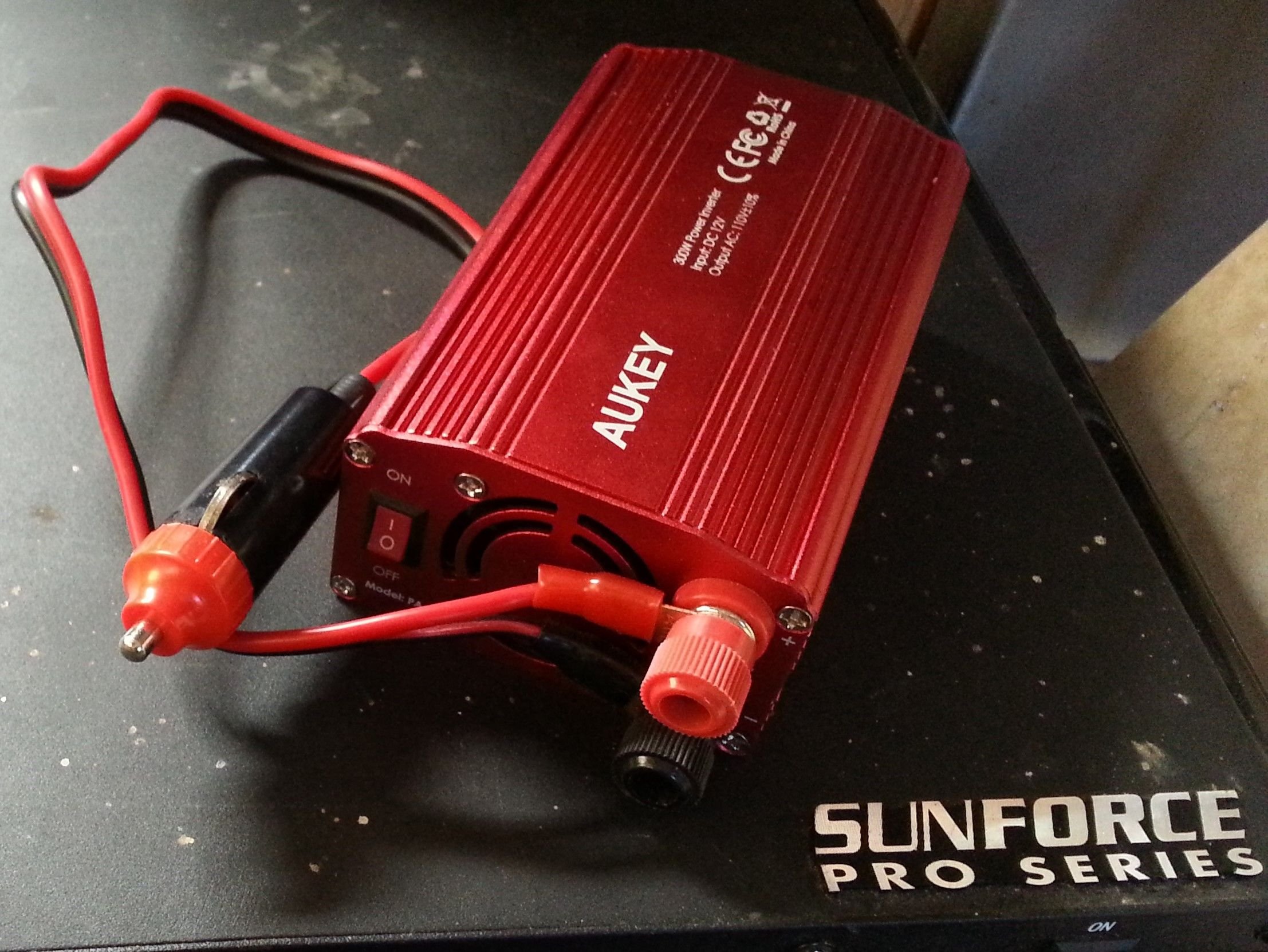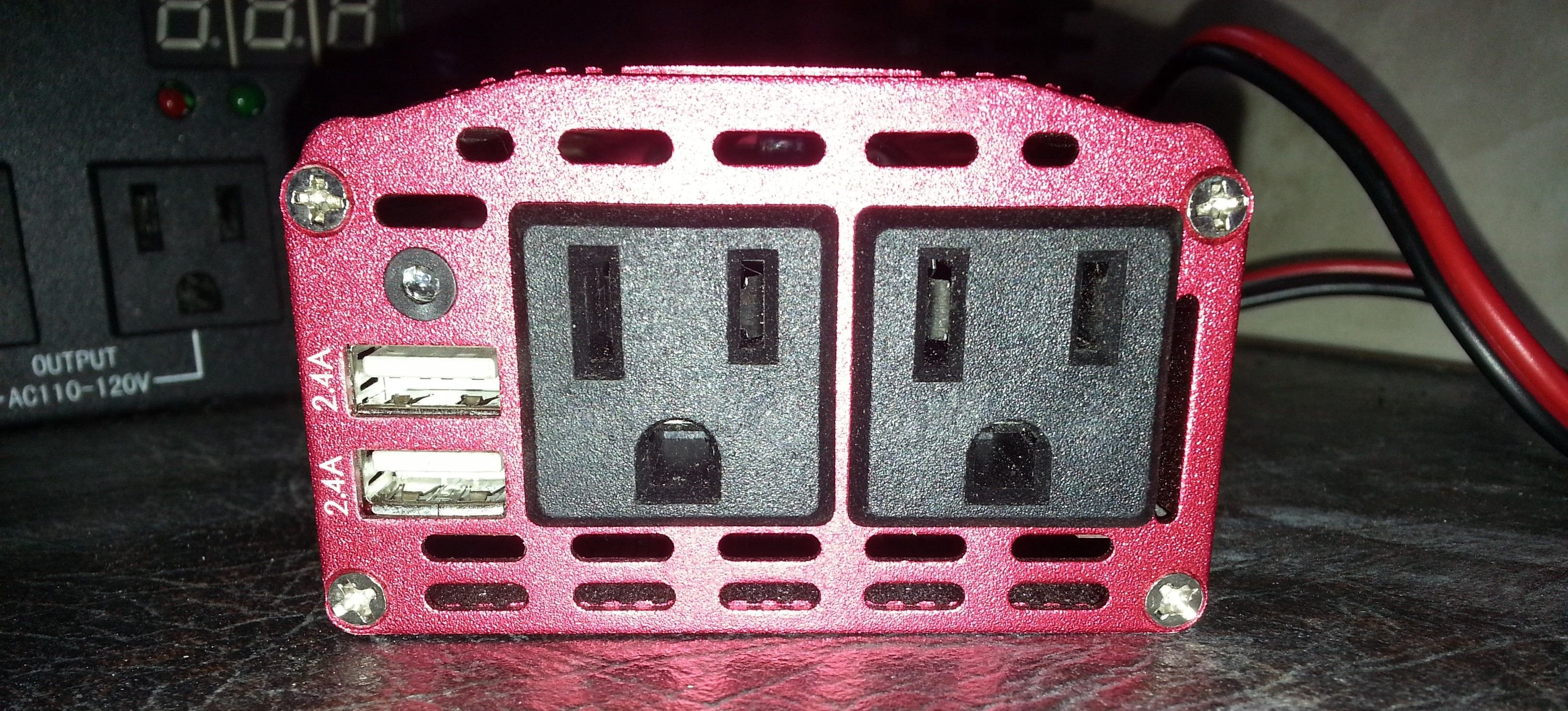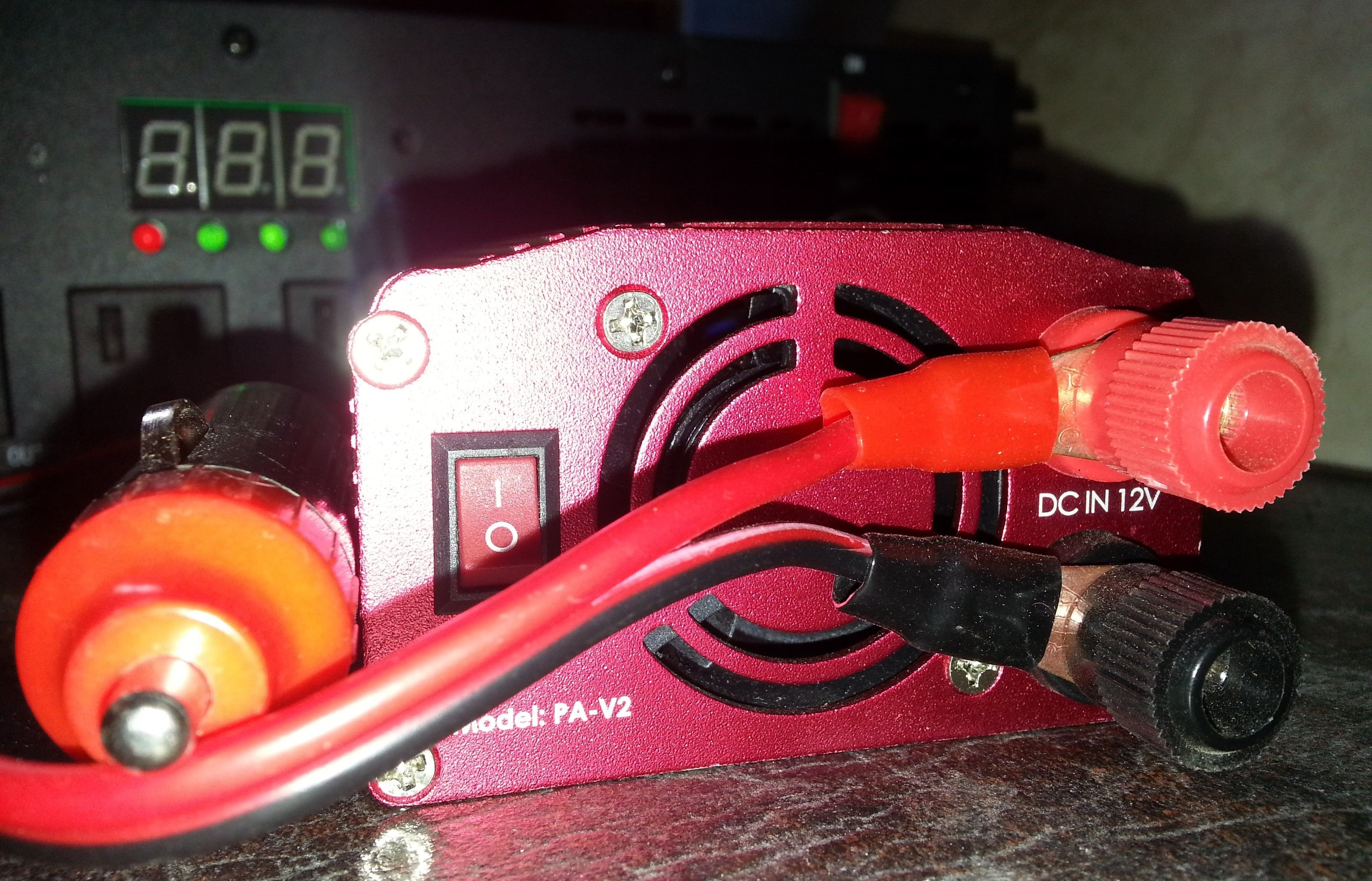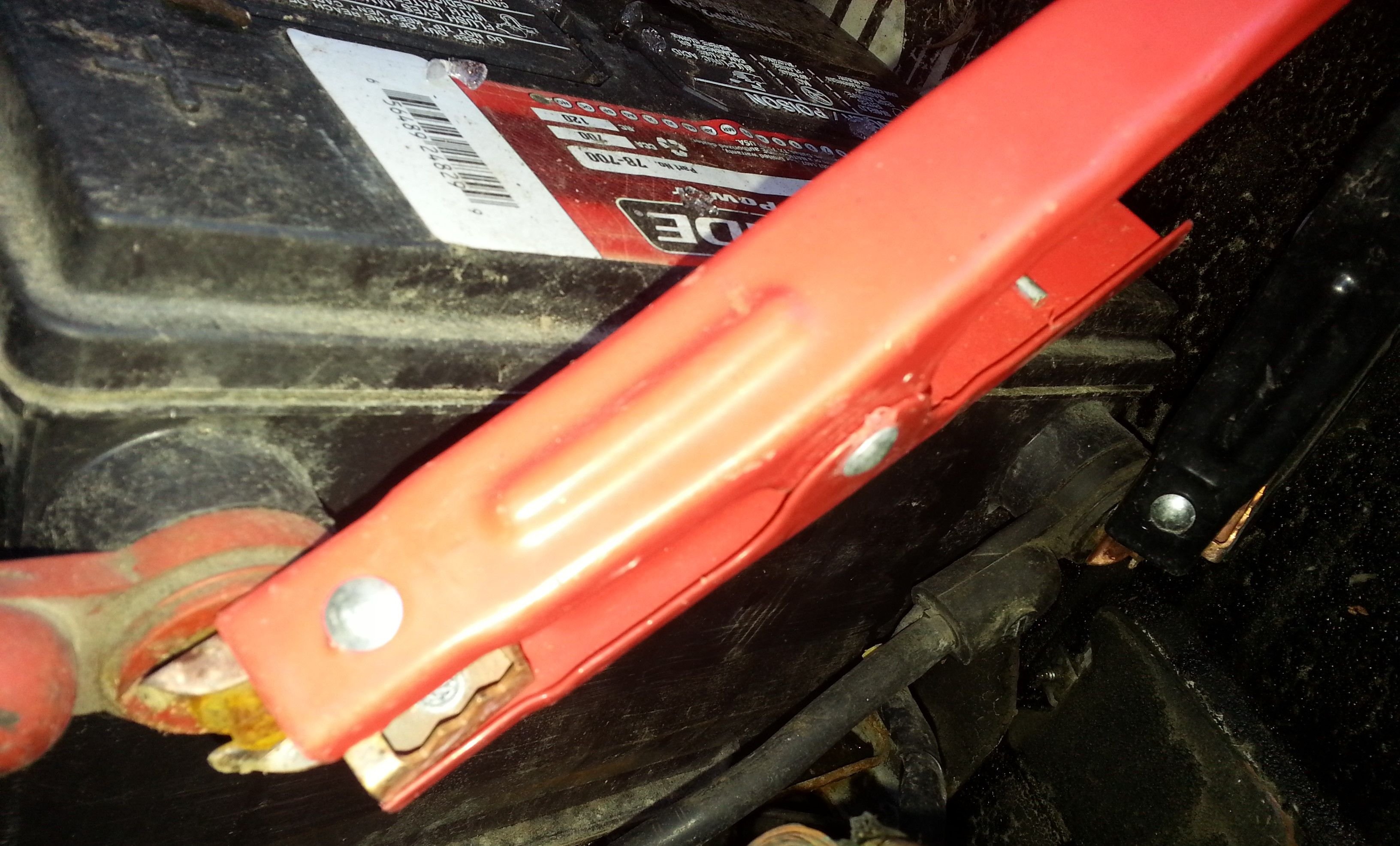With an Emergency or Off-Grid 12 volt battery system, there are times when you may need to invert the 12 volts to a standard household 120 volt outlet. Some countries have a higher household standard voltage, so be sure to purchase the correct voltage inverter for your needs.
The inverter Type and Size are two other factors to consider when choosing an inverter for your needs.

Two Major Types of Inverters
There are two major quality categories of inverters - Pure Sine Wave and Modified Sine Wave. The electricity from the pure sine wave is very smooth with little distortion. The electrically noisy modified sine wave inverters have electrical waves that look like jagged up and down staircases - when compared to the smooth up and down curves of the pure sine wave inverters.
Below is a rough representation drawring of the noisy modified sine wave in red.

Any equipment or devices with sensitive electronics should avoid the modified sine wave inverters.
Computers, printers, medical equipment, some laptops, brush-less motors, some tool battery chargers, televisions with HDMI, and many other modern devices may not turn on or may be damaged when powered by a modified sine wave inverter. The best case scenario with the modified sine wave inverter is that the motor or device may be less efficient and have a decreased life span.
Pure sine wave inverters are highly recommended if you are looking for a long term solution.
Pictured below is my rarely used modified sine wave inverter.

When I have used this red inverter, it was usually for the handy dual 2.4 amp USB charging ports. I had no noticeable trouble using 120 volt outputs with a laptop charger and 20 volt tool battery charger.

The smaller 300 watt modified sine wave inverter above is connected to the battery system with a 12 volt accessories port plug in. It also came with battery clamps as an alternative, but the cigarette lighter plug is the easiest for me to plug in the inverter.

Above is a picture of how an inverter could be directly connected to a 12 volt battery, using clamps.
- Red (+) Positive on the inverter going to the Red (+) Positive on the battery.
- Black (-) Negative on the inverter should be connected to the Black (-) Negative on the battery.
In the picture below, you can see the Red and Black 12 volt battery input terminals on the back of the larger 2500 watt pure sine wave inverter.

How to decide the Wattage Size of an Inverter
You will want to purchase an inverter large enough to handle the total number of appliances or devices that may be plugged in at one time. It is easiest to start with your largest needs. If you need 600 watts for a freezer, 200 watts for a laptop charger, and 60 watts for a TV that may all be turned on at once, then a 1000 watt inverter would most likely be able to handle that load.
This web site has a great chart with multiple common household appliance wattage's to help you with your inverter wattage need calculation:
You can see the front of the 2500 watt pure sine wave inverter in the picture below.

Notice the four electrical outlets with a breaker for each pair. The NGH output box can be accessed for the full 2500 watts of power - non split. You can see this inverter has a 12 volt accessory outlet on the far right. I never had much use for the remote control, it would turn the inverter off, but not back on.
You may find these previous posts useful:
-@jackdub/off-grid-how-to-calculate-the-battery-bank-size-for-your-off-grid-system-or-emergency-power-needs
-@jackdub/tech-talk-get-more-power-out-of-your-off-grid-system-with-single-voltage-conversion
-@jackdub/my-solar-powered-cabin-setup
Have a great day!
